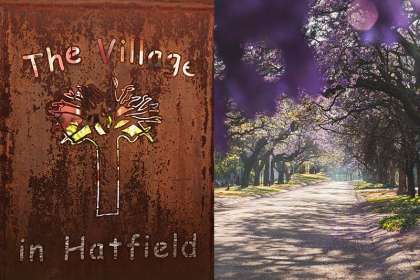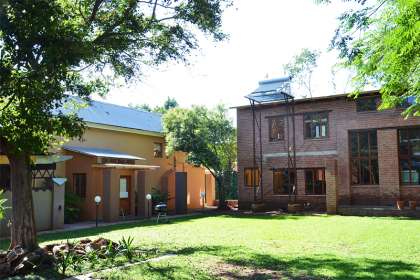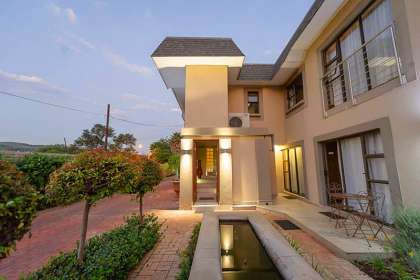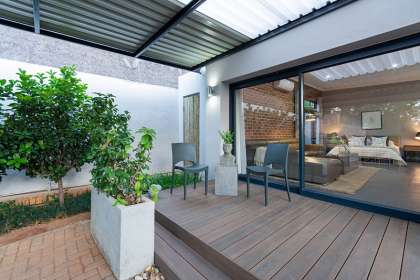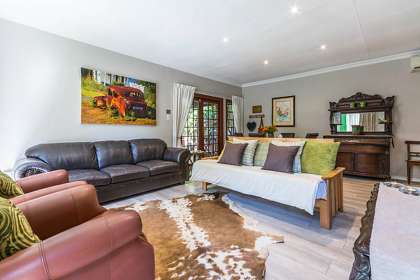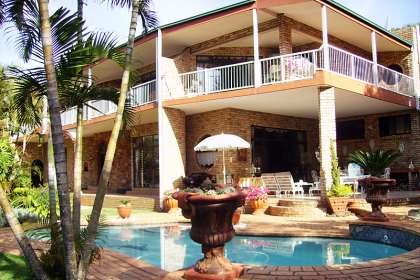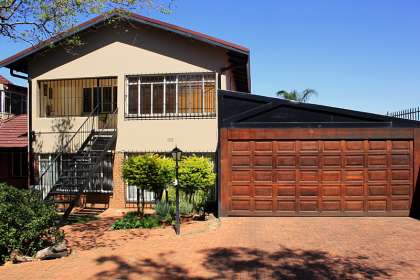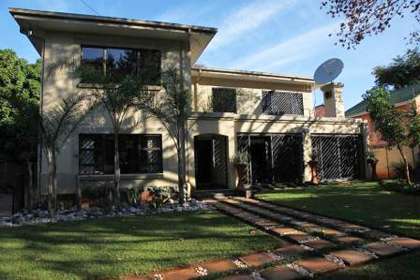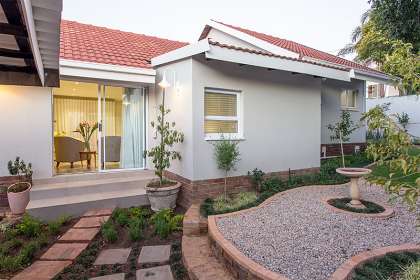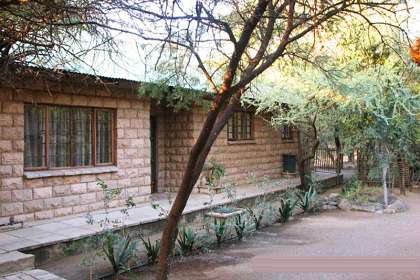Union Buildings - Pretoria, Gauteng
- Freedom Day Celebrations - Union Buildings, Pretoria (0.03km)
- Pretoria Art Museum - Pretoria, Gauteng (0.79km)
- Loftus Versfeld Stadium - Arcadia, Pretoria (1.71km)
- South African State Theatre - Pretoria (1.83km)
- Mzansi Fela Festival - South African State Theatre, Pretoria (1.87km)
- National Zoological Gardens (Pretoria Zoo) - Pretoria (2.23km)
- National Library of South Africa - Pretoria Central (2.28km)
- Mapungubwe Museum - University of Pretoria, Hatfield, Pretoria (2.28km)
- Pierneef Museum - Pretoria CBD, Gauteng (2.33km)
- Burgers Park - Central Pretoria (2.38km)
- University of Pretoria - Hatfield, Pretoria (2.42km)
- Magnolia Dell Park - Muckleneuk, Pretoria (2.42km)
- Intiem Love Bridge - Bailey's Muckleneuk, Pretoria (2.44km)
- Melrose House Museum - Central Pretoria (2.45km)
- Church Square - Pretoria (2.46km)
- Ditsong National Museum of Natural History - Central Pretoria (2.60km)
- Unisa Art Gallery - University of South Africa, Pretoria (2.60km)
- Geological Survey Museum of Pretoria - Pretoria Central, Gauteng (2.60km)
- UNISA - University of South Africa (Pretoria) (3.04km)
- Ditsong Kruger Museum - Central Pretoria (3.12km)
- Austin Roberts Memorial Bird Sanctuary - Pretoria (3.34km)
- Freedom Park Heritage Site and //hapo Museum - Pretoria (3.48km)
- Fort Klapperkop Military Museum - Pretoria (3.99km)
- Hazel Food Market - Lynnwood, Pretoria (4.51km)
- Fort Schanskop - Groenkloof, Pretoria (4.56km)
- Transoranje Christmas Market / Kersmark - Pretoria (4.66km)
- Voortrekker Monument Heritage Site - Pretoria (5.10km)
- Fort Wonderboompoort - Wonderboom, Pretoria (5.12km)
- Weskoppies Psychiatric Hospital - Pretoria, Gauteng (5.36km)
- Greenlyn Village Centre - Menlo Park, Pretoria (5.37km)
Union Buildings - Pretoria, Gauteng
The Union Buildings form the official seat of South Africa's government and house The Presidency as well as the Department of Foreign Affairs. They are built at the highest point of South Africa's capital city, Pretoria, and represent an extravagant time in South African history. The buildings were originally built to house the entire Public Service for the Union of South Africa, and at that point in history they were the largest building in the country and possibly the largest building work undertaken in the Southern Hemisphere.
The building is which is over 285m long is divided into three sections, left offices, amphitheatre and right offices, and each of these sections is 95m in length. The buildings are built in a semi-circle design with two wings at either side. The wings represented the union of a formally divided nation, the English and the Afrikaners. Construction began on The Union Buildings in 1909 and was completed in 1913. The project made use of approximately 1265 artisans, workmen and labourers, used over 14 million bricks for the interior office walls, half a million cubic feet of freestone, 74 000 cubic yards of concrete, 40 000 bags of cement and 20 000 cubic feet of granite. Although the architect wanted to use imported granite, the idea of using anything but South African stone for the most important government building of the new state was unthinkable to those who commissioned it, as a result, the terraces and retaining walls in the grounds are built predominantly of mountain stone quarried on site, the foundation of the building is of granite, while freestone was used for the exterior walls, the amphitheatre and major courtyards.
Although the last 100 years have seen a lot of important events, possibly the most important one was in 1994 when the buildings played host to the inauguration of former President Nelson Mandela, South Africa's first democratically elected President, heralding the beginning of a new era in South Africa's history. The buildings are located on the top of Meintjieskop at the northern end of Arcadia, close to historic Church Square and the Voortrekker Monument. An interesting fact about the Union Buildings and the Voortrekker Monument is that due to their significance a law in Pretoria limits the height of any building between the two structures so that the view between them remains unobstructed.
The Union Buildings are surrounded by beautifully terraced gardens of indigenous plants and various monuments embellish the expansive lawns. Some of these monuments include the Delville Wood War Memorial, which is a tribute to South African troops who died during the First World War, and a statue of the country's first president, General Louis Botha. The lawn in front of the Union Buildings is often the location for public gatherings, whether they are protest or celebration, such as the presidential inauguration. Unfortunately the buildings themselves are not open to the public.
The Union Buildings in Pretoria are an iconic symbol of South Africa's government and history.
Here are five notable aspects about them:
1. Architectural Marvel: Designed by the renowned architect Sir Herbert Baker, the Union Buildings are a masterpiece of neoclassical architecture. The buildings feature impressive sandstone facades, grandiose columns, and intricate sculptures, reflecting the grandeur of the British Empire during the early 20th century.
2. Seat of Government: The Union Buildings serve as the official seat of the South African government and house the offices of the President of South Africa. They are the site of various governmental functions, including presidential inaugurations, state functions, and diplomatic meetings.
3. Historical Significance: The Union Buildings hold significant historical importance in South Africa. They were constructed during the early 20th century to house the administrative offices of the Union of South Africa, a political entity established in 1910 that brought together the former British colonies and Boer republics.
4. Nelson Mandela Statue: One of the most prominent features of the Union Buildings is the bronze statue of Nelson Mandela, the first democratically elected President of South Africa. Unveiled in 2013, the statue stands atop a plinth overlooking the city of Pretoria, serving as a powerful symbol of South Africa's journey to democracy and reconciliation.
5. Beautiful Gardens and Grounds: Surrounding the Union Buildings are expansive terraced gardens and landscaped grounds that offer panoramic views of Pretoria. The well-maintained gardens are adorned with indigenous plants, fountains, and sculptures, providing a serene environment for visitors to explore and relax.
Overall, the Union Buildings are not only a symbol of governmental authority but also a testament to South Africa's rich history, architectural heritage, and commitment to democracy and equality.
Verblyf Naby Union Buildings - Pretoria, Gauteng
The Village in Hatfield
Bed & Breakfast Accommodation in Hatfield
3.1km from Union Buildings - Pretoria, GautengThe Village In Hatfield bied B&B-verblyf in Hatfield, Pretoria/Tshwane. The Village in Hatfield is 'n heerlike gastehuis wat 'n groep aparte eenhede bied, perfek ingerig vir 'n gerieflike verblyf in die hartjie van Pretoria. …sien meer vir besprekings / navrae en inligting.
Bed & Breakfast in Hatfield
Self Catering Apartment, Flatlet Accommodation in Hatfield
3.2km from Union Buildings - Pretoria, GautengBed & Breakfast in Hatfield is weggesteek in die afgesonderde deel van Hatfield, Pretoria. Luukse en warm gasvryheid, aangebied deur Des en Errol sal u verblyf in Suid-Afrika onvergeetlik maak met die skep van tuis van huis-gevoel. …sien meer vir besprekings / navrae en inligting.
Green Valley Lodge
Self Catering Apartment, Flatlet Accommodation in Pretoria Central
3.7km from Union Buildings - Pretoria, GautengGreen Valley lodge-akkommodasie in Pretoria is 'n luukse gastehuis in die hartjie van die voorstad Wonderboom-Suid, onder die Wonderboom-natuurreservaat, een van Pretoria se gewilde erfenisterreine. 'N Ware onverwagte betowerende verrassing verwelkom u me …sien meer vir besprekings / navrae en inligting.
Queensrest
Self Catering Apartment, Flatlet Accommodation in Pretoria
4km from Union Buildings - Pretoria, GautengQueensrest bied selfsorgverblyf in Queenswood Pretoria in Gauteng. Sentraal geleë in die gevestigde woonbuurt Queenswood, net 'n entjie van die Pretoriase sakekern af. 6 Selfsorg-eenhede om van te kies. (Eenhede het slaapplek vir 4 - 6 volwassenes). …sien meer vir besprekings / navrae en inligting.
Gratia
Self Catering House, Cottage, Chalet Accommodation in Pretoria
5.3km from Union Buildings - Pretoria, GautengGratia Cottage bied 2 selfsorgkothuise in die woonbuurt Waverley in Pretoria/Tshwane. Die sonnige en ruim selfsorgkothuise het slaapplek vir tot 6-7 gaste en straal 'n huislike aantrekkingskrag uit. Die kombuise is volledig toegerus... …sien meer vir besprekings / navrae en inligting.
Swan-Lake Luxury Guesthouse
Bed & Breakfast Accommodation in Montana Park
6.2km from Union Buildings - Pretoria, GautengSwan-Lake Luxury Guesthouse bied B&B-verblyf in Montana Park in Pretoria, Gauteng. Montana Park is 'n stil lowerryke noordelike voorstad van Pretoria wat maklike toegang tot die Pretoriase sakekern bied. Ons bed en ontbyt is geleë in 'n pragtige... …sien meer vir besprekings / navrae en inligting.
Fralande
Self Catering Apartment, Flatlet Accommodation in Pretoria
6.4km from Union Buildings - Pretoria, GautengFralande Lodge bied 2 selfsorgverblyf-eenhede in die Pretoriase voorstad Waverley in Gauteng. (Die eenhede het slaapplek vir 4 en 6). Kyk uit oor 'n pragtige tuin waar mens vrede en rustigheid kan vind. Ons dra ons gaste se belange op die hart... …sien meer vir besprekings / navrae en inligting.
Die Pastorie Guesthouse/Gastehuis
Bed & Breakfast Accommodation in Pretoria
7.7km from Union Buildings - Pretoria, GautengDie Pastorie Guesthouse/Gastehuis bied B&B-verblyf in Silverton oos van Pretoria/Tshwane in die Gauteng provinsie. Ons maak voorsiening vir die kieskeurige korporatiewe en ontspanningsreisiger. Die gastehuis bestaan uit sewe luukse... …sien meer vir besprekings / navrae en inligting.
The Aviary
Self Catering Apartment, Flatlet Accommodation in Pretoria
9.1km from Union Buildings - Pretoria, GautengThe Aviary bied selfsorgverblyf in Waterkloof Glen in die suidweste van Pretoria. Ons bied twee eenhede, The Sparrow (slaapplek vir 2) en The Swallow (slaapplek vir 4). Elkeen met en suite-badkamers (stort en bad), HD platskerm met volledige pakket DSTV. …sien meer vir besprekings / navrae en inligting.
Little Bushveld
Self Catering House, Cottage, Chalet Accommodation in Bon Accord
12.2km from Union Buildings - Pretoria, GautengGevestig op 'n plot met twee grasdak, selfsorg/bed & ontbyt berghutte wat die gemak en gerief van u eie huis aanbied. Elkeen het 'n toegeruste kombuis met eie badkamer, skadukolle om te ontspan en/of om vleis te braai. …sien meer vir besprekings / navrae en inligting.
- Freedom Day Celebrations - Union Buildings, Pretoria (0.03km)
- Pretoria Art Museum - Pretoria, Gauteng (0.79km)
- Loftus Versfeld Stadium - Arcadia, Pretoria (1.71km)
- South African State Theatre - Pretoria (1.83km)
- Mzansi Fela Festival - South African State Theatre, Pretoria (1.87km)
- National Zoological Gardens (Pretoria Zoo) - Pretoria (2.23km)
- National Library of South Africa - Pretoria Central (2.28km)
- Mapungubwe Museum - University of Pretoria, Hatfield, Pretoria (2.28km)
- Pierneef Museum - Pretoria CBD, Gauteng (2.33km)
- Burgers Park - Central Pretoria (2.38km)
- University of Pretoria - Hatfield, Pretoria (2.42km)
- Magnolia Dell Park - Muckleneuk, Pretoria (2.42km)
- Intiem Love Bridge - Bailey's Muckleneuk, Pretoria (2.44km)
- Melrose House Museum - Central Pretoria (2.45km)
- Church Square - Pretoria (2.46km)
- Ditsong National Museum of Natural History - Central Pretoria (2.60km)
- Unisa Art Gallery - University of South Africa, Pretoria (2.60km)
- Geological Survey Museum of Pretoria - Pretoria Central, Gauteng (2.60km)
- UNISA - University of South Africa (Pretoria) (3.04km)
- Ditsong Kruger Museum - Central Pretoria (3.12km)
- Austin Roberts Memorial Bird Sanctuary - Pretoria (3.34km)
- Freedom Park Heritage Site and //hapo Museum - Pretoria (3.48km)
- Fort Klapperkop Military Museum - Pretoria (3.99km)
- Hazel Food Market - Lynnwood, Pretoria (4.51km)
- Fort Schanskop - Groenkloof, Pretoria (4.56km)
- Transoranje Christmas Market / Kersmark - Pretoria (4.66km)
- Voortrekker Monument Heritage Site - Pretoria (5.10km)
- Fort Wonderboompoort - Wonderboom, Pretoria (5.12km)
- Weskoppies Psychiatric Hospital - Pretoria, Gauteng (5.36km)
- Greenlyn Village Centre - Menlo Park, Pretoria (5.37km)

 Union Buildings, Pretoria ©
Union Buildings, Pretoria ©  Evening view from the Union Buildings in Pretoria ©
Evening view from the Union Buildings in Pretoria ©  Looking down on Pretoria from the Union Buildings ©
Looking down on Pretoria from the Union Buildings ©  Union Buildings ©
Union Buildings © 